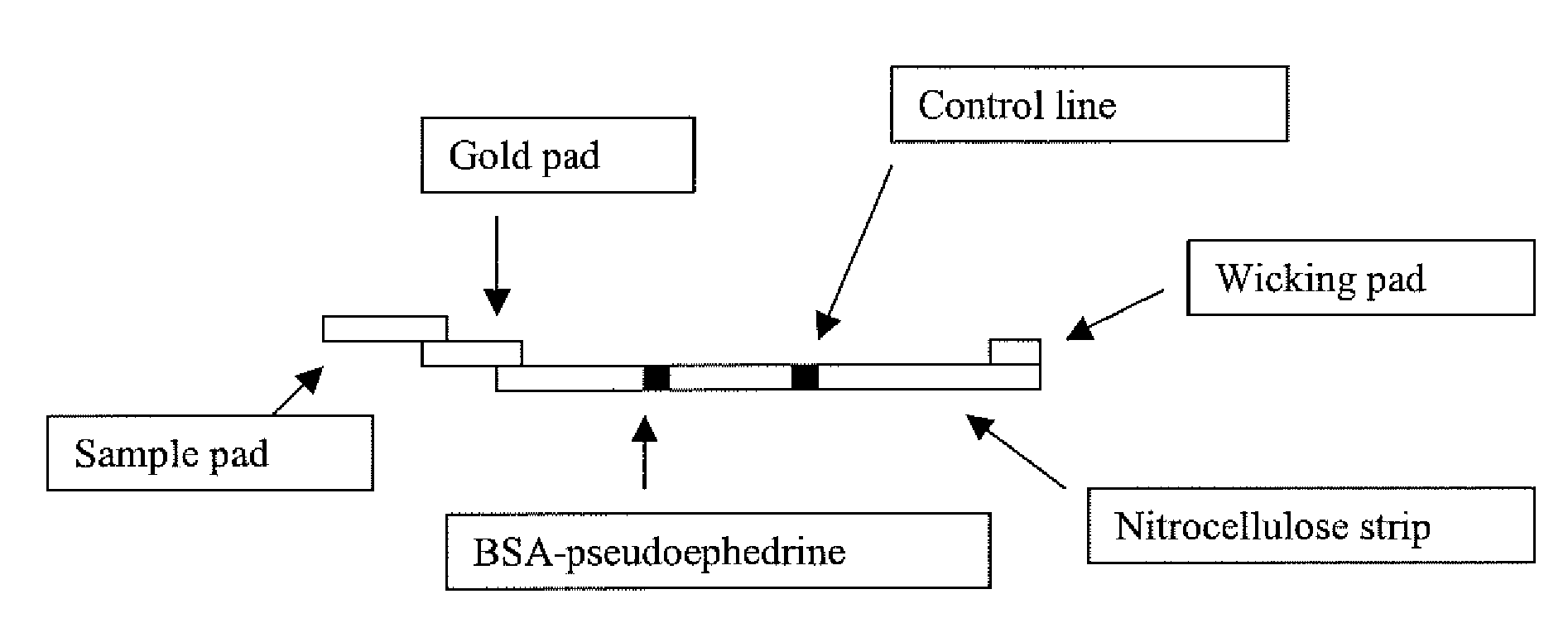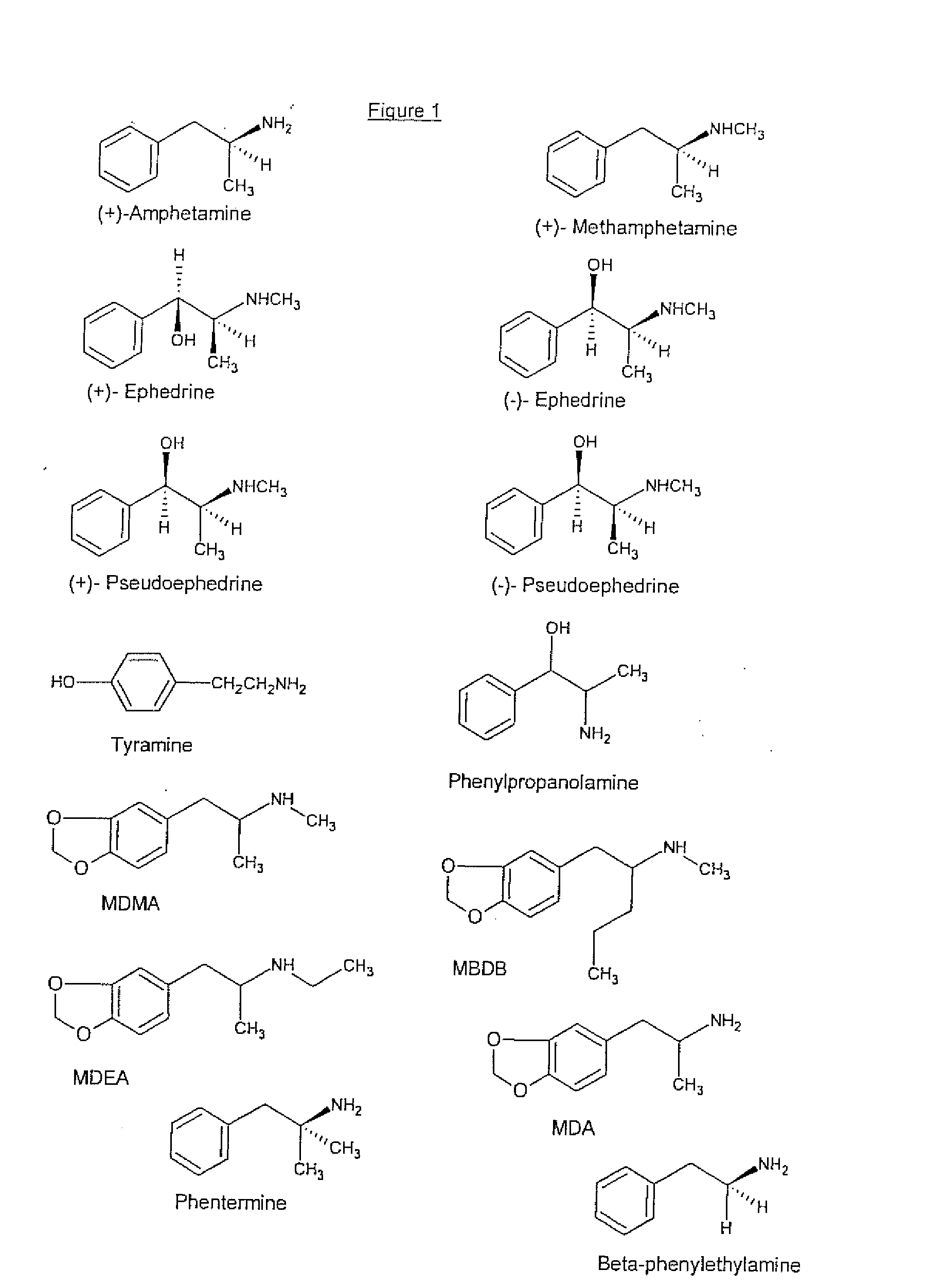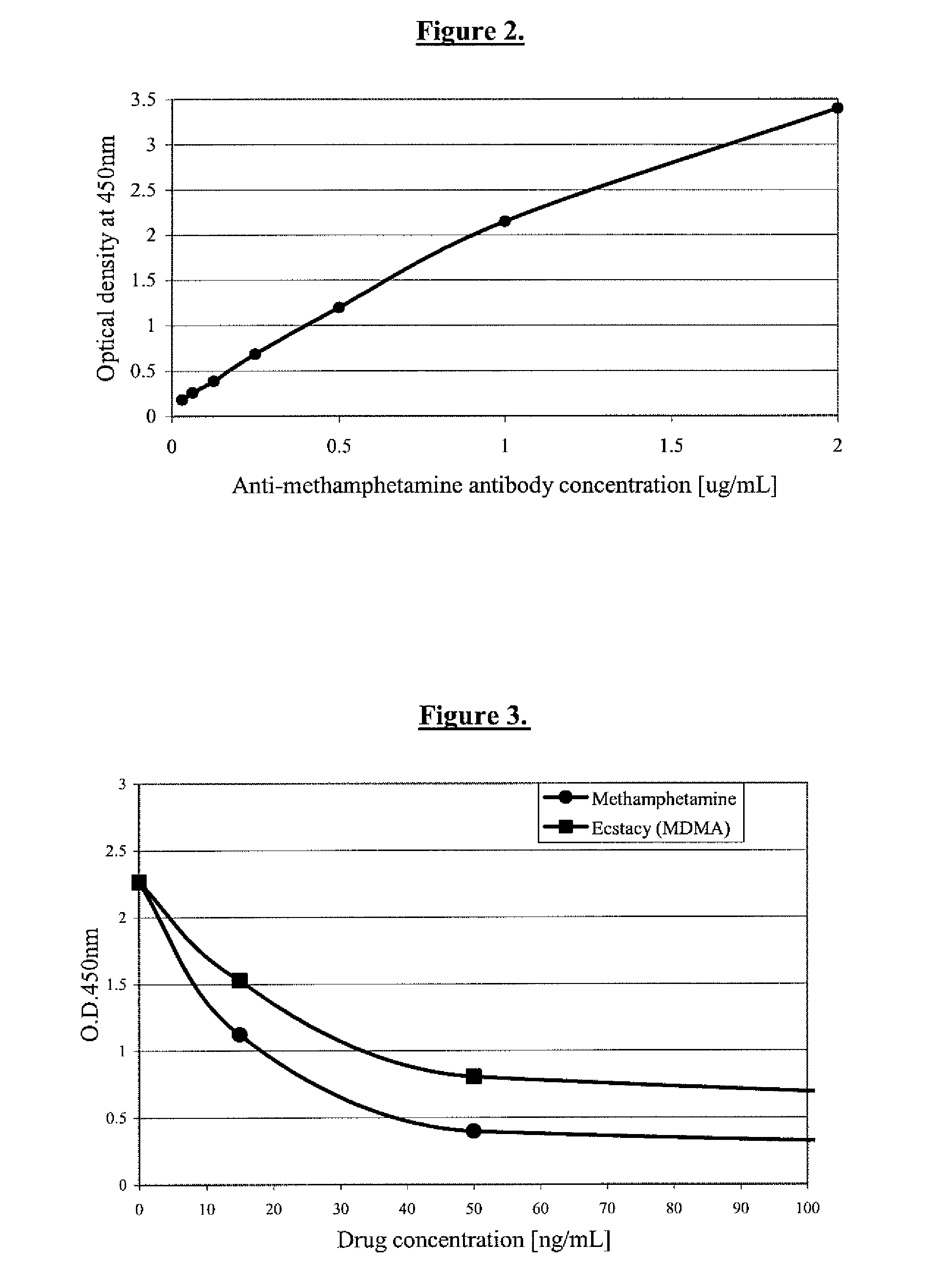Detection of Methamphetamine Group Drugs
a technology of methamphetamine and group drugs, which is applied in the field of detection of methamphetamine group drugs, can solve the problems of lack of specificity for methamphetamine, heavy abuse of drugs, and limitations of known immunoassays using derivatives of ecstasy
- Summary
- Abstract
- Description
- Claims
- Application Information
AI Technical Summary
Benefits of technology
Problems solved by technology
Method used
Image
Examples
example 1a
Preparation of BSA-pseudoephedrine Using dimethyl aminopyridine / disuccinimidyl carbonate
[0045]10 mg of (+)-pseudo-ephedrine ((+)-(ψ)-ephedrine-HCl, product number E-2750, Sigma Co., Poole, England) or 8.0 mg of (−)-pseudoephedrine (Sigma-Aldrich product No. 287644) were dissolved in 0.4 ml of dimethylformamide (DMF). 88 mg of disuccinimidyl carbonate in 0.4 ml DMF were added dropwise to the ephedrine solution. Dimethyl aminopyridine (42 mg) in 0.4 ml acetone were added very slowly and dropwise to the above mixture. The solution was stirred overnight at room temperature in the dark. BSA (60 mg) was dissolved in 6 ml of 0.1 M sodium bicarbonate. The activated drug was added slowly to the BSA solution. The solution was kept stirring at room temperature overnight. The drug protein conjugate was then dialysed against phosphate buffered saline, pH 7.3 containing 0.05% sodium azide for 3 days with several changes of the buffer. Finally, the protein concentration was determined by Lowry pro...
example 1b
Preparation of BSA-aminocaproic acid-pseudoephedrine
[0046]In many cases of immunoassays for haptens, better antibody binding can be achieved by extending the distance between the hapten molecule and the carrier molecule to which it is attached. BSA with an attached spacer was prepared as follows: Dissolve BSA (200 mg) in 4 ml of 0.05 M MES / NaOH buffer, pH 5.0. Add aminocaproic acid (ACA) (200 mg). After the ACA is completely dissolved, add 100 mg of N-hydroxysuccinimide in dimethyl formamide (0.3 ml). Conjugation of the ACA to BSA was then initiated by the addition of 120 mg of the water-soluble carbodiimide cross-linker EDAC in 0.2 ml water. The mixture was stirred for 4 hours at room temperature then a further 40 mg of EDAC in 0.1 ml water were added and stirring continued overnight at room temperature. The BSA-ACA conjugate was separated from free ACA by gel filtration on a Sephadex™ G-50 medium column using phosphate buffered saline, pH 7.3 for elution. The protein peak was pool...
example 2
Preparation of BSA-pseudoephedrine Using formaldehyde
[0048]Bovine serum albumin (25 mg) was dissolved in 2.5 ml of 0.1 M MES / NaOH buffer, pH 5.0. 4.0 mg of (+)-pseudoephedrine-HCl or 3.2 mg of (−)-pseudoephedrine in 0.2 ml water were added. While stirring, 0.5 ml of 37% formaldehyde was added slowly. The solution was stirred overnight at room temperature. The drug-BSA conjugate was purified by gel filtration on a Sephadex™ G50M column using phosphate buffered saline, pH 7.3 as the eluting buffer. The protein peak was pooled and protein concentration determined using Lowry protein assay.
PUM
| Property | Measurement | Unit |
|---|---|---|
| Fraction | aaaaa | aaaaa |
| Fraction | aaaaa | aaaaa |
| Density | aaaaa | aaaaa |
Abstract
Description
Claims
Application Information
 Login to View More
Login to View More - R&D
- Intellectual Property
- Life Sciences
- Materials
- Tech Scout
- Unparalleled Data Quality
- Higher Quality Content
- 60% Fewer Hallucinations
Browse by: Latest US Patents, China's latest patents, Technical Efficacy Thesaurus, Application Domain, Technology Topic, Popular Technical Reports.
© 2025 PatSnap. All rights reserved.Legal|Privacy policy|Modern Slavery Act Transparency Statement|Sitemap|About US| Contact US: help@patsnap.com



